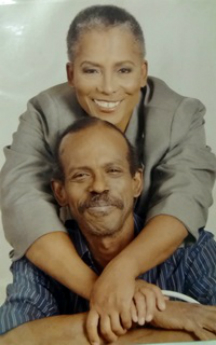Thoracic Outlet Syndrome Patient Octavia Taylor

It had been years since Octavia Taylor could turn her head to the left without feeling pain.
Working as an electrician at the National Institutes of Health, there was plenty of turning and twisting, so much that at times Taylor had to ask coworkers to complete seemingly simple tasks for her.
“I’d have to lift my head up and the whole left side would crack,” said Taylor, who also experienced pain when reaching overhead. “Everyday tasks at work were becoming really hard to do.”
After seeing multiple doctors, undergoing several tests, and even having surgery to attach nerves to her spine, Taylor was still experiencing pain. That’s when she was referred to Rajabrata Sarkar, MD, PhD, chief of the University of Maryland Medical Center’s Division of Vascular Surgery.
After more tests, Dr. Sarkar diagnosed Taylor with a rare condition: thoracic outlet syndrome, which occurs when the blood vessels or nerves in the space between your clavicle and your first rib (thoracic outlet) become compressed.
“Patients with thoracic outlet syndrome are often misdiagnosed and spend months to years being treated in ways that are often unsuccessful,” Dr. Sarkar said. “That’s because they’re told they may have cervical spine disease. Many have surgery for cervical spine disease that don’t provide any relief. They’re often diagnosed with problems of the nerves, such as carpel tunnel syndrome or other problems in the upper extremity. Because people don’t think of thoracic outlet syndrome, the diagnosis is delayed.”
Taylor was one such patient – misdiagnosed and waiting for the proper diagnosis.
After an initial CAT scan, Taylor, who lives in Belcamp, Md., was called back for more tests and ultimately was kept overnight. The testing found something new: Taylor had a torn aorta because of compression between her left clavicle and the top rib.
Emergency surgery wasn’t required, so UMMC staff worked with Taylor to schedule surgery seven months later.
During surgery, Dr. Sarkar and his team removed Taylor’s top rib, relieving pressure on the aorta.
The surgery was in November 2015 and Taylor returned to work in April 2016. She can now perform the everyday tasks – pulling wire, running conduits and terminating switches – that her condition prevented her from doing.
“I’m almost 55 but I don’t feel it,” Taylor said. “Because of Dr. Sarkar, I feel like I’ve gotten a second chance. Some things we take for granted, and then it goes out and you don’t know what to do. I can do those things again. I appreciate him to the fullest.”
